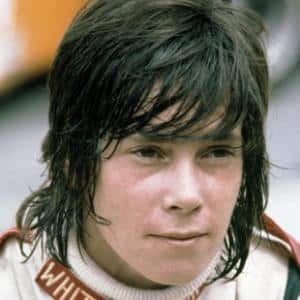Divina Galica: the brilliant woman racer who mixed ski slopes with grand prix asphalt
A British trailblazer on the ski slopes as well as the racing track, Divina Galica’s sporting life has been governed by speed. Matt Bishop hears her incredible story
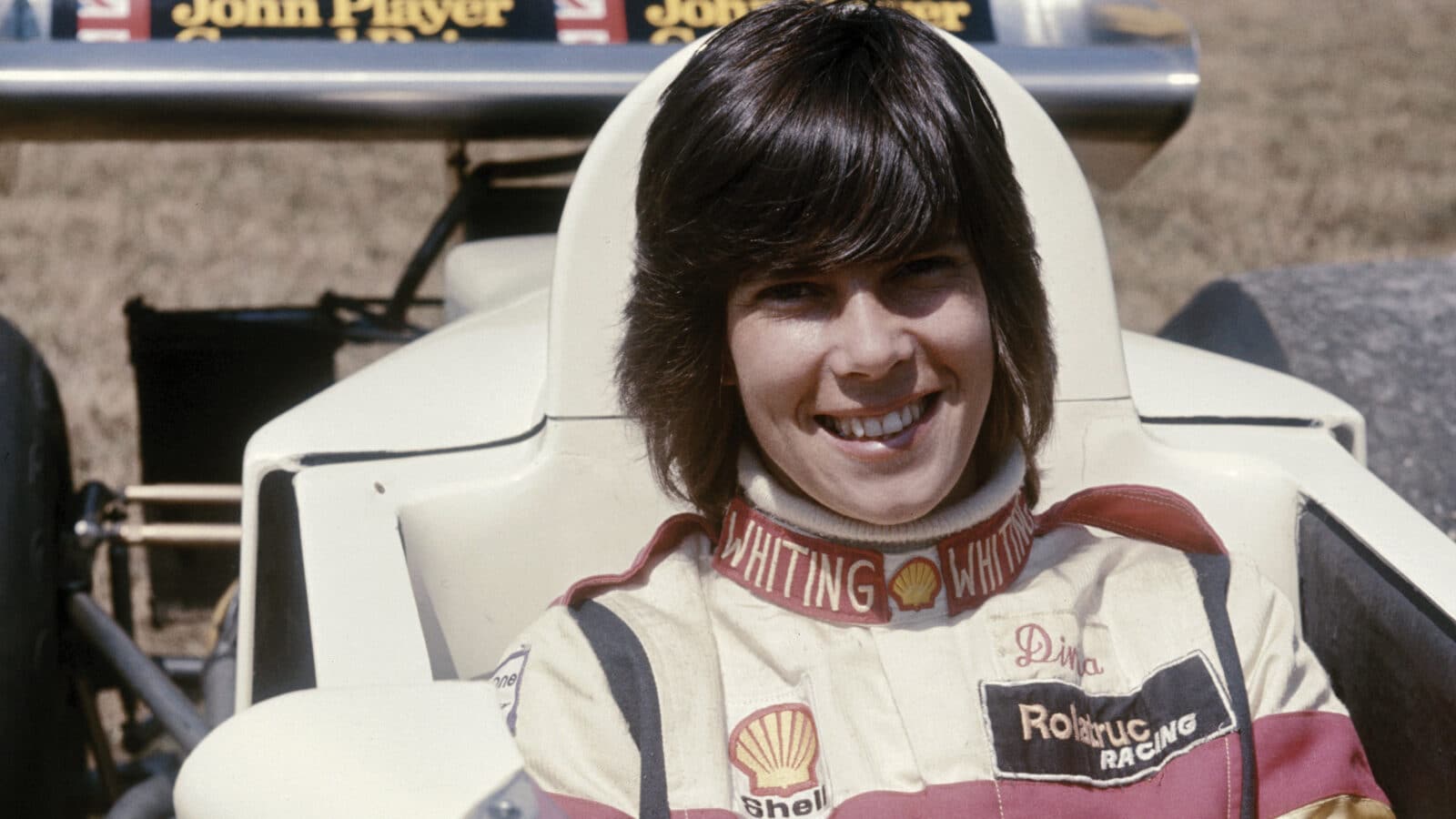
Divina Galica, 1976 British GP.
Getty Images
Divina Galica never meant to be a racing driver. On the contrary, skiing was her first sporting enthusiasm, and in many ways it remains her greatest sporting love. Born in Bushey Heath, Hertfordshire into a middle-class but not notably well-to-do family in August 1944 – yes, she is 80 – ‘Divi’, as she was always called, was introduced to the slopes at the age of four when her mother June took the eldest four of her six children on holiday to Lenk, Switzerland.
“Mum had booked the trip in the hope that Papa [Wladyslaw] might join us,” she recalls, “but he didn’t. He had a bad heart, and a farm to look after at home, so he gave it a miss. She was disappointed, and it was a pity. He died two years later, when I was only six, so I hardly remember him to be honest. He was Polish. He and Mum had met in London during the war, when he was working for a department of MI5, as a kind of spy. He was Mum’s second husband. Her first husband had been killed in the war, as had so many.
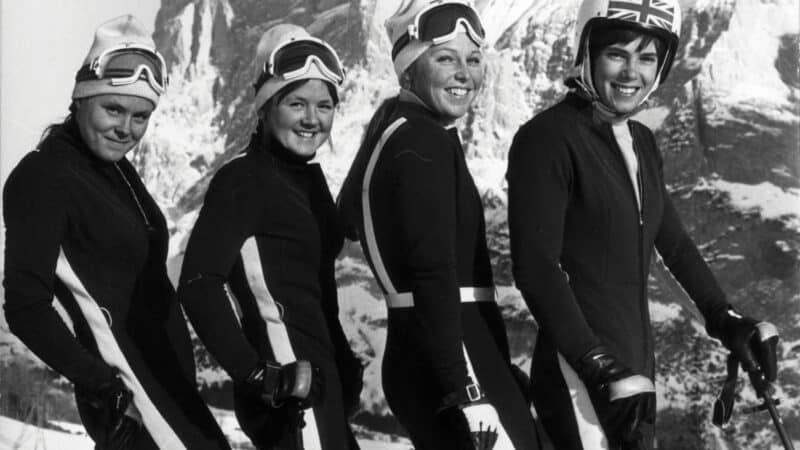
Valentina Iliffe, Carol Blackwood, Gina Hathorn and Galica, 1972 Winter Olympics
Getty Images
“So Mum wasn’t ambitious about my skiing, even though I must have shone quite early on and we went on annual skiing trips for quite a few years after that first one, because when I was 15 I was spotted by Ros Hepworth, who ran the DHO – Down Hill Only – skiing club at Wengen [Switzerland]. Under Ros’s guidance I began to enter junior events in Switzerland, and I won quite a lot of them, so when I was 18 I was selected to train with the British women’s Olympic ski team at Val d’Isère [France].
“To hell with fear. Besides, falling on snow doesn’t really hurt”
“You have to understand that very few Brits skied in those days, and there wasn’t a whole lot of competition for me. So, at 19, I was selected to compete in the 1964 Winter Olympics at Innsbruck [Austria], and two years after that I won my first adult downhill race, at Bariloche [Argentina]. By 1968 I was skiing pretty well. I finished third in two world championship downhill races, at Bad Gastein [Austria] and Chamonix [France], which British girls simply didn’t do in those days – and I was named captain of the British women’s Olympic ski team for the 1968 Winter Olympics at Grenoble [France] and again four years later for the 1972 Winter Olympics held at Sapporo [Japan]. In the 1968 Olympics I finished eighth in the giant slalom, and seventh in the same event in 1972. But actually I always preferred downhill to slalom.”

Galica in 1969, at 25, on the Army’s dry ski slope in Aldershot; she already had two Winter Olympics under her belt by this point, with more to follow
Getty Images
She is modest about such glories, which other octogenarian Olympians might look back on with conspicuous pride. Surely she was not only skilled but also fearless. “I’d put it differently,” is her reply. “I was strong and well-trained. Also, I’d spent my childhood trying to keep up with my elder brothers, so I had that determination to do well that all sports people need. But fearless? To hell with fear. Besides, falling on snow doesn’t really hurt.” If you say so, Divi, if you say so.
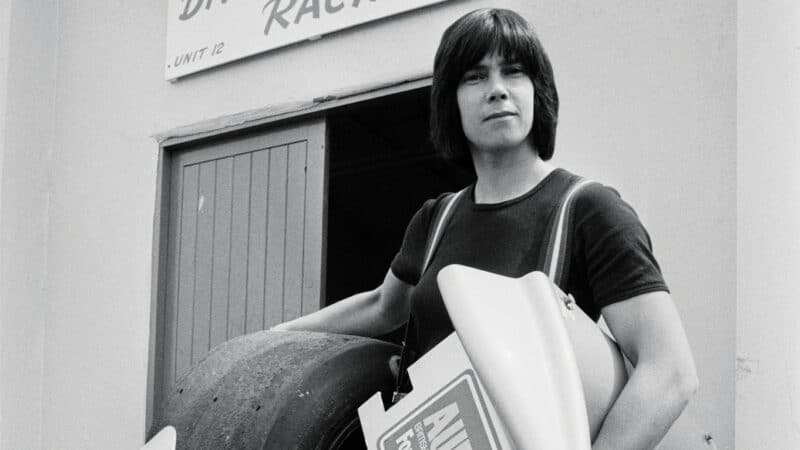
Hands full in British F1 days, 1979
Getty Images
She turned 28 in 1972, by which time she thought that her pro skiing career had ended (it had not). “I was wondering what to do next – I was running a ski-wear shop on Sydney Street [Chelsea, London] with Gina Hathorn [a fellow pro skier] for a while when, out of the blue, in 1974, I was invited by John Webb [the famously long-serving Brands Hatch chief executive] to do a Ford Escort celebrity race at Oulton Park. I was 30, and I honestly hadn’t even watched a motor race before, let alone competed in one. But I thought I’d give it a go – and, to my surprise, I finished second, beaten only by Chay Blyth [the round-the-world yachtsman and rower], who was doing his third Ford Escort celeb race. If I hadn’t had that experience, maybe I’d never have thought of trying my hand at motor racing, but John was impressed so he enrolled me in a training course at Brands Hatch. I loved it, and I turned out to be not too bad at it.
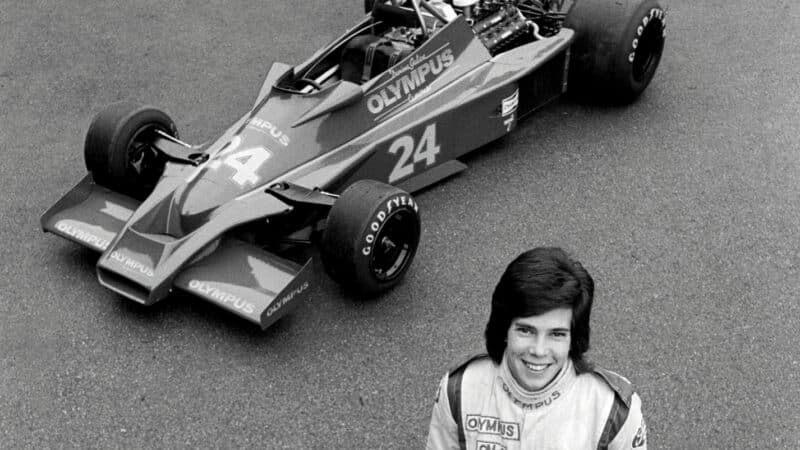
Olympus trip: Galica with the underperforming Hesketh 308E that she was tasked with racing in Formula 1 in 1978
“I started racing – in karts, Formula Fords, then Clubmans – and it was as Nick Whiting’s team-mate in a Clubmans Ford Escort Special Saloon that I cut my racing teeth in 1975. Nick was brilliant in those cars – he won a hell of a lot of races in them – and his brother Charlie [who would later enjoy a glittering career with Brabham and the FIA in Formula 1] was our mechanic.
“I barrelled into Paddock Hill and I went straight on into the tyre wall. It was a massive impact”
“I remember my first wet race, which was at Brands Hatch. ‘Don’t worry, you’ve got treaded tyres,’ said Nick. So I barrelled into Paddock Hill as fast as I’d taken it in the dry, and I went straight on into the tyre wall. It was a massive impact. I wasn’t hurt but the car was a write-off. I clung to the steering wheel and it bent as we hit the wall. I should have kept it, as Stirling [Moss] kept his bent steering wheels from a number of his shunts.
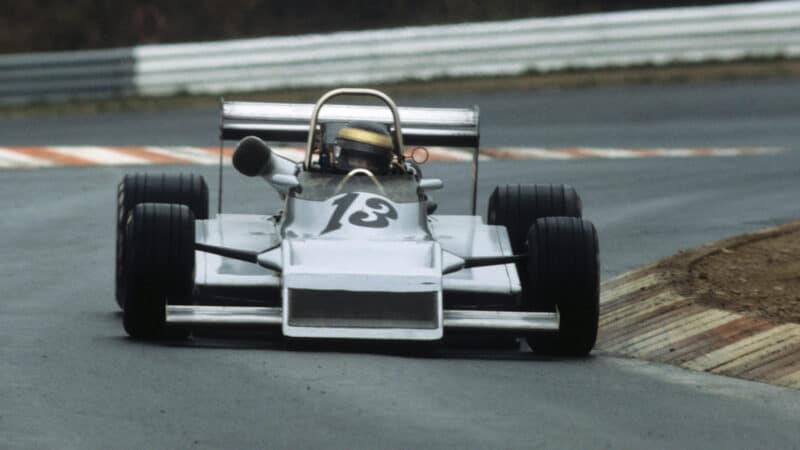
By 1979, Galica was racing a March 792 on a tight budget in European F2 – here at the Nürburgring
“Nick was lovely, so kind to me, and I learned so much from him. I did two seasons of the Shellsport International Series with him in 1976 and 1977, and we did OK. The first year I had a number of decent placings – fourth at Thruxton and Mallory Park, fifth at Snetterton, sixth at Brands Hatch and Oulton Park – but our car was a Surtees TS16 F1 car and it was a tricky thing to drive. John asked me to try to qualify it for the 1976 British Grand Prix at Brands Hatch and of course I couldn’t do that. It was my first proper world championship-status F1 attempt and, as I say, the car really wasn’t up to it.” Again, she is being modest. Yes, she DNQ’d, but she had posted a quali-lap more than a second faster than Mike Wilds had managed in his Shadow DN3 and almost two seconds quicker than Lella Lombardi’s best in her Brabham BT44B.
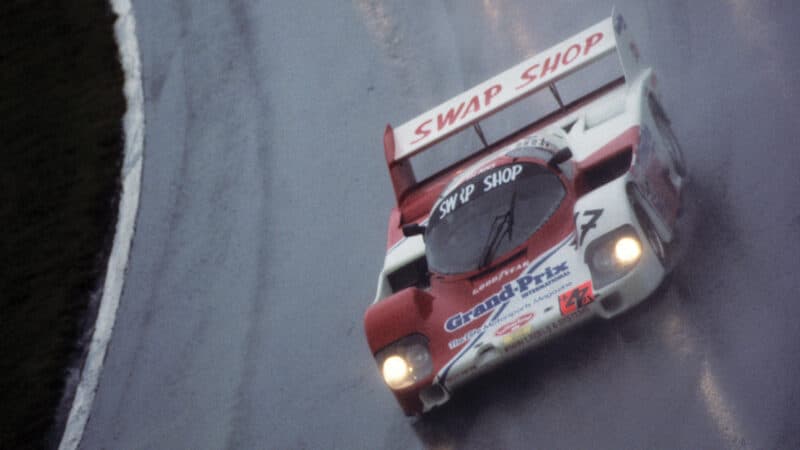
The gloom of the Brands Hatch 1000Kms in 1983, with Galica sharing duties of a Porsche 956.
Grand Prix Photo
In 1977 the Whiting brothers had upgraded her to a newer Surtees F1 car – a TS19. “That year’s Shellsport International Series was great fun. The TS19 was a wonderful car and I got four podiums in it – at Snetterton, Mallory Park, Donington, and Brands Hatch – and I got fastest lap at both Donington and Brands Hatch. I finished sixth in the championship, and I would have done better if I hadn’t had five DNFs on the trot early on, but Tony Trimmer won it pretty easily. I nearly beat him at Donington, though. We had a great race together. That year I also raced a Lola T490 in the then new Sports 2000 series, and I won 10 races in it. I finished second in the championship and would have won it if I hadn’t had to miss a round so as to race the Surtees in the Shellsport International Series instead.
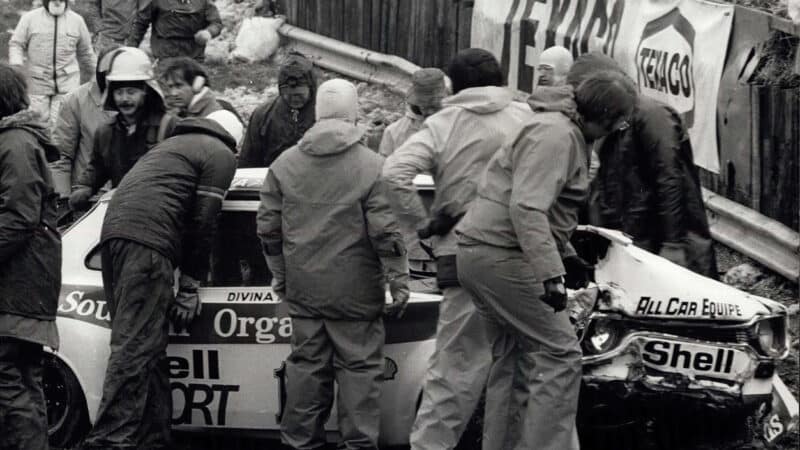
As racing-in-the-damp debuts go, Galica’s was awful – her Escort a write-off at Brands, 1975
“Nick was great, as I say. Before every race he used to walk up to my car on the grid and tap me on the helmet. He used to call it our lucky tap. I was devastated when, many years later [in 1990], he was murdered. The men who did it have never been convicted, even now, but it was a gangland killing. My understanding is that a group of gangsters thought Nick had seen them doing something illegal, so they had to eliminate him. They sent five men to his workshop, near Brands Hatch, who beat him up, drove him to Rainham Marshes [Essex] in the boot of their car, then stabbed him nine times and shot him twice. His body wasn’t found for weeks. We’d become dear friends. It was incredibly distressing. At his funeral I cried my eyes out. Just terrible.”
In 1978, now sponsored by camera manufacturer Olympus, she entered the Zandvoort round of the British Formula 1 Championship in her Surtees TS19, and the Thruxton round in a McLaren M23, finishing second in the Surtees just half a second behind Bob Evans’ similar car and seventh in the McLaren. Earlier in 1978 she had had another go at pukka F1. “Peter Hunt, James Hunt’s brother, decided to become my manager. Via James’s Hesketh connections he arranged for me to race a Hesketh 308E in the first two races of that year’s F1 World Championship, at Buenos Aires and Jacarepaguá. I went up to Easton Neston, Lord Hesketh’s family seat, to take a look at the car, which was painted in Olympus colours. They gave me half a day’s testing in it, at Snetterton, where it rained, then they shipped it off to South America.
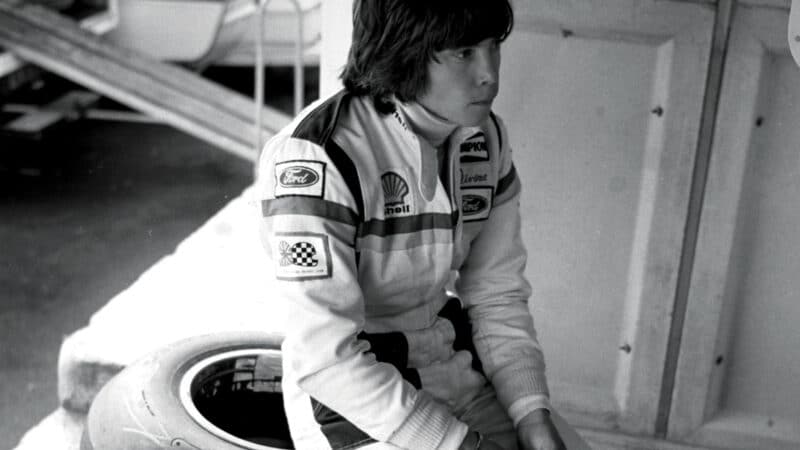
Galica had serious competition in the 1977 Race of Champions at Brands – James Hunt, Jody Scheckter, Mario Andretti…
“So, when I got there, I had to try to qualify a mediocre car that I’d never driven in the dry at two challenging circuits I’d never seen before. It had a six-speed ’box and on the Friday in Argentina I found that the gearlever just wouldn’t go in. Niki Lauda [then driving for Brabham] noticed I’d been struggling, and he came over to chat to me about it. ‘Tell your mechanics to change the clutch master cylinder,’ he said. So I did – and suddenly the gearbox was OK. But, having lost both Friday sessions with that problem, on Saturday I was now desperate to make up for lost time.
“I had to qualify a mediocre car that I’d never driven in the dry at two challenging circuits”
“Early on in that session I’d been passed at the big 180-degree right-hander, Curvón de Salotto, by Mario Andretti and Ronnie Peterson in their Lotus 78 wing cars, and I saw that they didn’t lift as they swooped by. So on my next lap I tried to take it flat myself. That was a mistake: my Hesketh certainly didn’t have the Lotus’s level of downforce, I spun off into the infield, and the car was chopped in half against a marshals’ post. Luckily I wasn’t hurt and neither were the marshals, but it was too late to rebuild the car for qualifying.

Galica finished 15th in the 1977 Race of Champions in her favoured Surtees TS19.
Grand Prix Photo
“The next day I watched the race with Marlene Lauda, Niki’s then wife. Niki finished second, and Mario won. At one point Marlene said to me, ‘Don’t worry that you didn’t qualify. Niki told me that even he couldn’t qualify that Hesketh heap of junk.’ I couldn’t qualify it at Jacarepaguá two weekends later, either. I wish I’d entered those two races in the Surtees TS19. It was a much better car than that old Hesketh. Niki was right about that.”
But 1978 ended on a high. “Fred Opert invited me to Hamilton [Canada] to race a Chevron B39 alongside Keke Rosberg, who had a newer Chevron B45. We were sponsored by a condom manufacturer, Sheik, and our cars were bright pink. I assumed Fred would organise and pay for my flights but, the day before I thought I was due to fly, a panic-stricken woman from Labatt [the brewery], the race’s sponsor, called me to ask me whether I’d be attending their pre-weekend media event. Well, it was the first I’d heard of it. So I rushed to Heathrow where Labatt had bought me a seat on Concorde. I flew at Mach 2 to New York, JFK it was, from where I was transferred by limo to LaGuardia, another airport also in New York, where a Labatt private jet flew me to Hamilton.

In Hesketh garb, ’78
DPPI
“On Concorde I’d been sitting next to a lovely man, and we’d drunk a hell of a lot of good red wine together. I was pie-eyed. I’d just about sobered up by the time I did the Labatt press conference. The next day was the race. I finished fifth in the B39, behind Keke [the winner], Price Cobb, Bobby Rahal and Danny Sullivan.
“In 1979 I formed my own team, using money I’d borrowed from the bank, to enter the Aurora AFX British F1 Championship. I bought a March-Hart 792, which was a ground-effect Formula 2 car. I didn’t have enough cash to complete either season, but I was fifth at Donington in 1979 and sixth at Oulton Park in 1980.” Again she is being modest. In her 2-litre F2 car she was beaten only by ex-works 3-litre F1 cars at Donington in 1979, and by 1980 her March 792 was getting a bit long in the tooth.
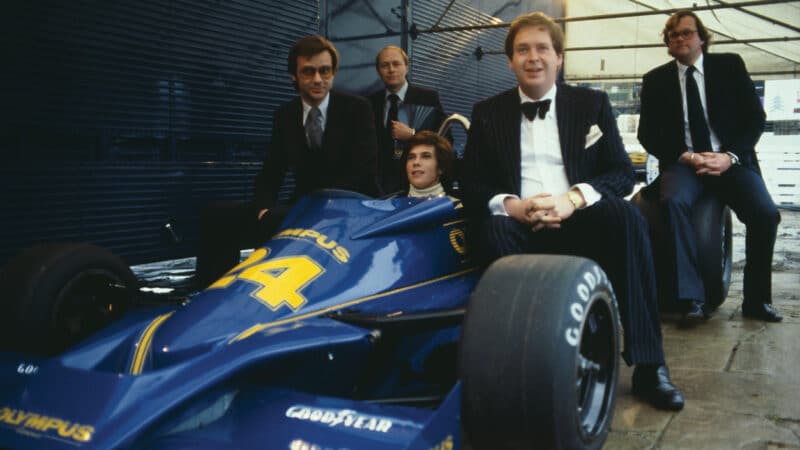
Hesketh’s F1 launch in 1978 was at Silverstone, by which time Galica was the sole team driver; Lord Hesketh is on the tyre.
“Apart from Brian Redman and Niki Lauda, who were both great, most top-class drivers were friendly enough to me throughout my racing career, but I wouldn’t call them proper friends. To be honest, they didn’t really want a woman raining on their parade, and they were always extremely keen to beat me. Their wives and girlfriends didn’t really want me around, either. The girls were nice enough, but they’d have been happier if I hadn’t been there.
“The only series I did that was different from that was truck racing, which I did in the 1980s, as part of Rod Chapman’s team. Those big, heavy Ford Cargo trucks were great – and so easy to drive. We raced all over Europe in them, and I won quite a few. You got prize money in cash – US dollars – all the way down to 10th place, so I did pretty well financially. They were restricted to 100mph, which was policed by the standard tachographs in the cabins, but everyone bent the needles so that we could go faster. We had wonderful parties in the evenings.”
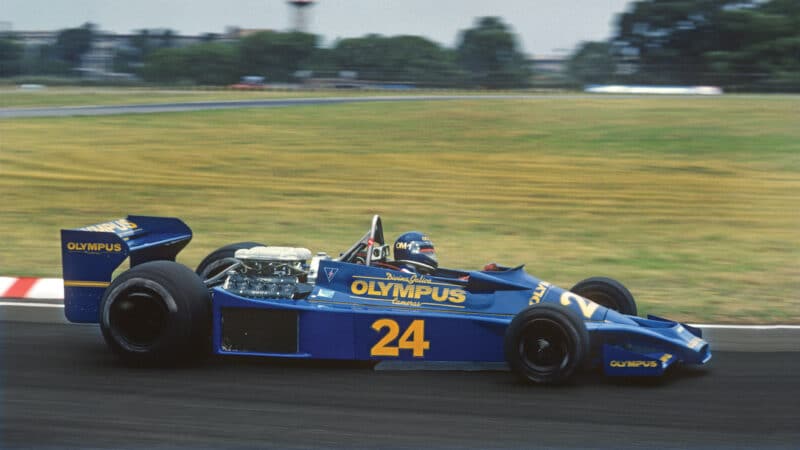
Galica during practice at the 1978 Argentine GP
Divina had thought her skiing career had ended after the 1972 Winter Olympics. But she was wrong. At 47 she was selected to represent Great Britain in the 1992 Winter Olympics at Albertville, France, and the following year she broke the British women’s speed record, reaching 124.709mph. As she entered her fifties, having finally called time on her skiing career, she moved to the States, which she has made her home since. She did a few more motor races – one of them in a round of the Barber Pro Series that included current McLaren Racing CEO Zak Brown – simply because she needed the money, before reinventing herself as a driver coach, first for the Skip Barber Racing School then for the Bertil Roos Racing School.
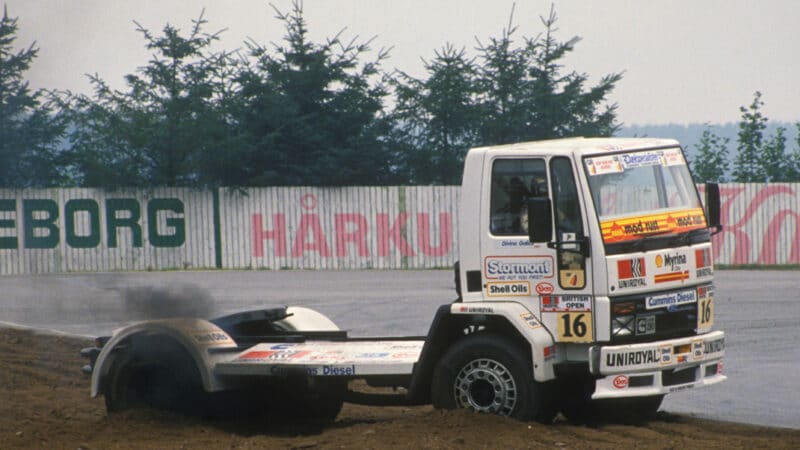
A spin in a Ford Cargo for Galica in the 1980s
Zak Mauger/LAT Images
Now retired and living with her cat Ginger in a motorhome in Sebring, Florida, does she miss the UK? “Yes, I miss my old friends, and I miss the pretty little villages. But I haven’t visited since 2019, before Covid. I haven’t even updated my passport, to be honest, so I have the right to reside in the US but I can’t travel overseas. Actually, my back and knees are too painful for long flights now – the result of skiing and motor racing injuries – so I guess I may never see my homeland again.
“I’m a massive Lewis Hamilton fan. I regard him as a kindred spirit”
“I started feeling old earlier this year. I used to love running and playing tennis, but, although I still walk a lot, I can’t run or play tennis any more. That upset me at first, but I’ve adapted to it now. You have to. Even so, I miss [she pauses while searching for the mot juste] excitement. Yes, excitement. I miss that.”
But is there anything on Divi’s bucket list that still needs ticking off?
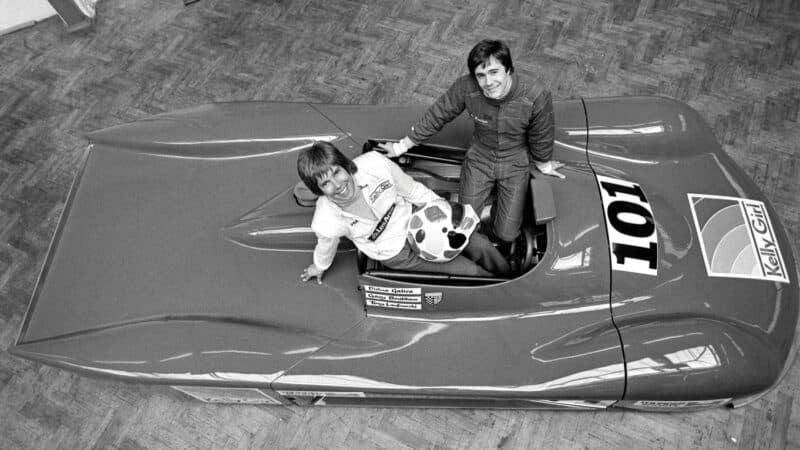
With Gary Brabham in ’85 in the Thundersports Shrike P15
Getty Images
She chuckles, then says: “I’ve had a fantastic life, wonderfully privileged, and I have no regrets whatsoever. But, yes, there are three things on my bucket list. The first is that I’d like to go up onto the Appalachian Trail in Connecticut, which was a regular haunt of mine back in the day. I used to love running there. Now I could walk there. That would be lovely, because it’s a truly beautiful place. The second is that I’d love to go skiing one last time. And the third? Well, you’re probably going to laugh, but I’m a massive Lewis Hamilton fan. The way he tackled the obstacles in his way to do what he’s done, as a black man, was and is incredible – and, as a woman who had to tackle different obstacles, I regard him as a kindred spirit and, yes, an inspiration. He’s a brilliant driver and a wonderful person. I’ve never met him, but I’d absolutely love to do so. It would be an honour even to shake his hand.”

Today ‘Divi’ lives in Florida – with a dream to meet an F1 hero…
LAT
The distance from Sebring to the Miami International Autodrome is 155 miles – a two-and-a-half-hour car journey according to Google – and the 2025 Miami Grand Prix takes place on May 4. Well, what do you think, Ferrari? Do you need another rock-solid supporter on race day?
